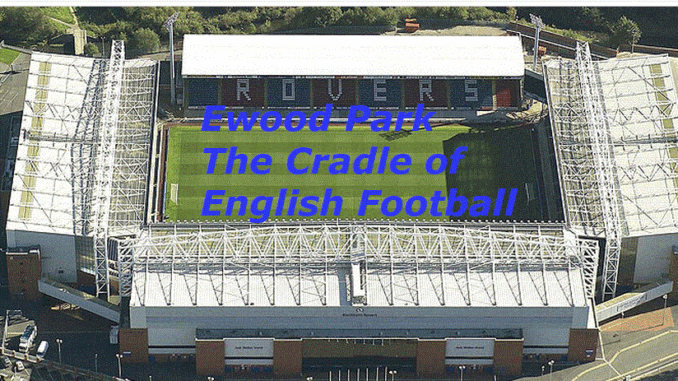
I do not condone football violence, whether spontaneous or organised, nor do I seek to glorify it.
Historical background: 1880s–1960s.
I don’t support or try to promote football violence, whether it be organised or unplanned.
I have never been a “football casual” and I never will be.
My own observations, news print reports, books and articles by people in the know, and eyewitness experiences have
all contributed to the information on this website.
You may readily find all of the information on this page by using basic internet searches, websites, YouTube, DVDs,
documentaries, books, magazines, and news papers.
I see myself as engaging in a ‘journalistic endevour’ in order to plot some sort of historical acuaracy about an
important part of football terrace culture connected to Blackburn Rovers, as it was to most football clubs big and
small, particularly in the 1970’s and 1980’s.
If any of the information is incorrect and you are a genuine person who would like to advise me of any errors then I
can be contacted through this web site.
I am interested in football hooliganism and casual culture as a social phenomina and (at the risk of sounding like a
pretentious middle-class academic) I also posess a keen interest in the facts, rather than the myths so often spun,
particularly by those who themselves are rarely, if ever, involved in the activities that they boast about.
Anyone unfortunate enough to have been drawn into an internet exchange with a Blackburn obsessed wierdo from
Burnley who spends most of his or her time lurking around Blackburn Rovers message forums will know what I
mean.
However unpleasant violence might be where ever it occurs, football violence in one form or another has been a part
of the game since its earliest days.
Not only was Blackburn pivotal in bringing football to the masses, not only was the town, its clubs and its supporters
influential in the formation of the football league and the game turning proffessional, Blackburn also has another
less celebrated claim to fame: the invention of the football hooligan.
The game had been dominated for years by the Old Etonians, the Old Corinthians and such like. Then the industrial
city clubs came of age with Blackburn winning the FA cup in 1884. Ever since, no gentlemen amateur team has ever
won the competition, and the bourgeoisie took note of the danger the “northern” (i.e. working class) crowd posed.
The football hooligan was invented when the Pall Mall Gazette reported, allbeit with somewhat racist and imperialist
undertones on the Blackburn fans arrival for the final:
“A northern horde of uncouth garb and strange oaths – like a tribe of Sudanese Arabs let loose.”
These fiercely partisan crowds were not what the bourgeoisie had intended. They were vociferous. They drank on the
way to the match. They were unruly and they solidarised with each other. These were the very first “hooligans”
Blackburn Rovers have a number of local Lancashire rivalries, due to being the most successful of all the town clubs
in Lancashire and England and due to the relative proximity of numerous other town clubs such as Burnley, Preston
North End, Blackpool, Bolton Wanderers and Wigan Athletic, along with Lancashire city clubs such as Liverpool,
Everton, Manchester United and Manchester City.
The local rivalry between Blackburn Rovers and Preston North End goes back over one hundred years. In 1888
Preston refused to play a match against Blackburn due to their reception by the Blackburn fans. Whether this was at
Ewood Park or not is unclear as Rovers did not take up permanent residence at Ewood Park until 1890.
Blackburn Rovers played local rivals Darwen on Christmas Day, 1890, during the Rovers’ inaugural season at Ewood
Park. Rovers fielded a weaker squad since they had a match against Wolverhampton Wandereres the next day. The
supporters were furious about this, especially since the game’s ticket costs had gone up. The supporters urged the
Darwen team to leave the pitch when they arrived, and they did so before coming back with their second eleven.
After a while, supporters of Blackburn and Darwen stormed onto the pitch, threatening to destroy the press box and
dragging up the goal posts. After stepping in, the cops were able to get the situation under control.
Lancashire derbies can always be heated affairs and on 27.11.1926, during a Division 1 fixture, Blackburn Rovers v
Manchester United saw ugly scenes of crowd trouble immediately after the final whistle was blown.Many Rovers
supporters saw “our” Sid Puddefoot, a Rovers player, laying on the ground following the final whistle. The Rovers
supporters started an invasion of the pitch because they thought a United player had struck him. This created a risky
scenario when hundreds of irate Rovers supporters encircled the Manchester United players. The cops cleared a
passage to the player’s tunnel after stepping in to ensure the players’ safety. Many attempts were made to attack the
United players, but hundreds of Rovers supporters stayed on the pitch. Fearfully, the United players bolted the door
after entering their changing room. The throng was soon dispersed by the police. Rovers won the game 2-1.
Read more news on https://sportupdates.co.uk/


Leave a Reply